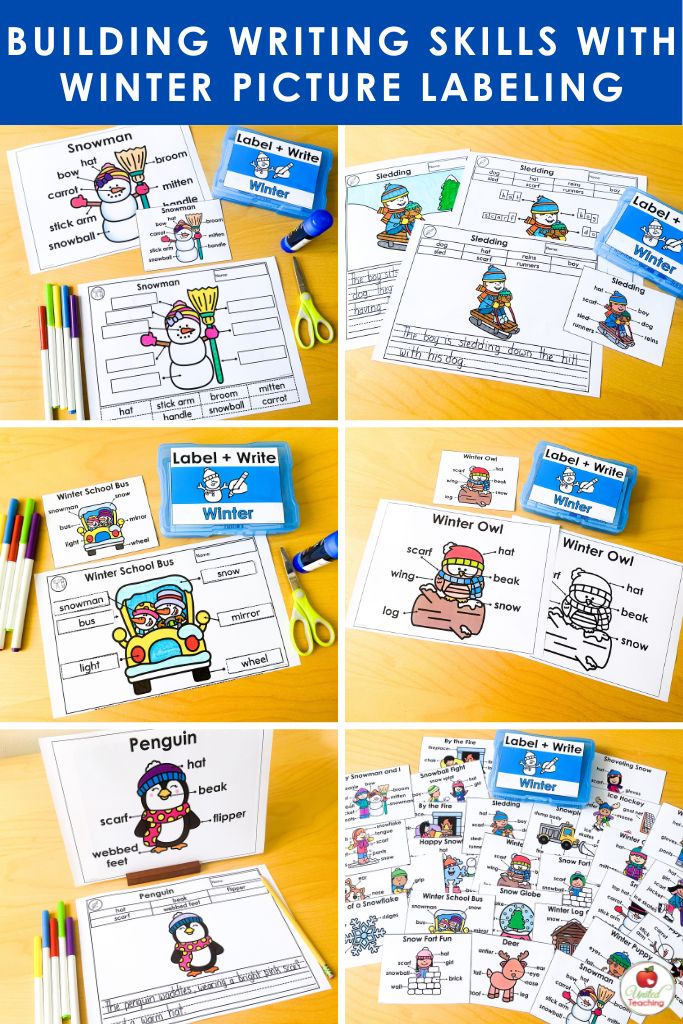Winter brings a special kind of excitement to kindergarten classrooms. Those moments when students’ eyes light up at the mention of snow or their eager pointing at winter scenes are perfect opportunities for building writing skills by labeling winter pictures! Picture labeling is a powerful strategy for turning this natural enthusiasm into meaningful learning. By combining students’ excitement for the season with emergent writing activities, teachers can foster critical literacy skills in a way that feels engaging and fun.
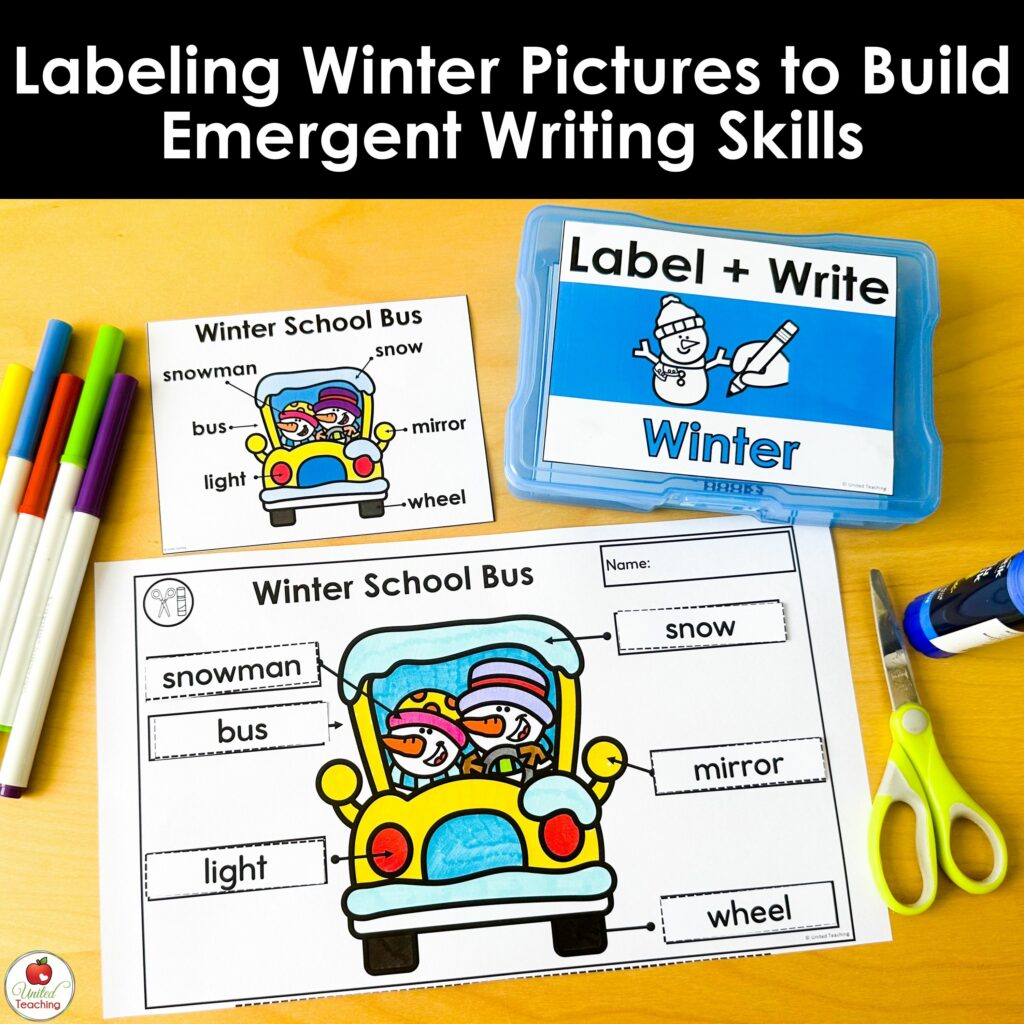
Why Labeling Activities Work in Kindergarten
Labeling pictures helps kindergarten students develop key skills in a meaningful context:
- Building Vocabulary: Labeling winter items like “mittens,” “scarf,” and “snowman” helps students expand their seasonal vocabulary.
- Enhancing Print Awareness: Seeing words associated with familiar images reinforces the understanding that print carries meaning.
- Strengthening Fine Motor Skills: Writing labels supports fine motor development, building hand strength and control.
- Boosting Confidence: Success in labeling builds self-assurance as students begin to see themselves as capable writers.
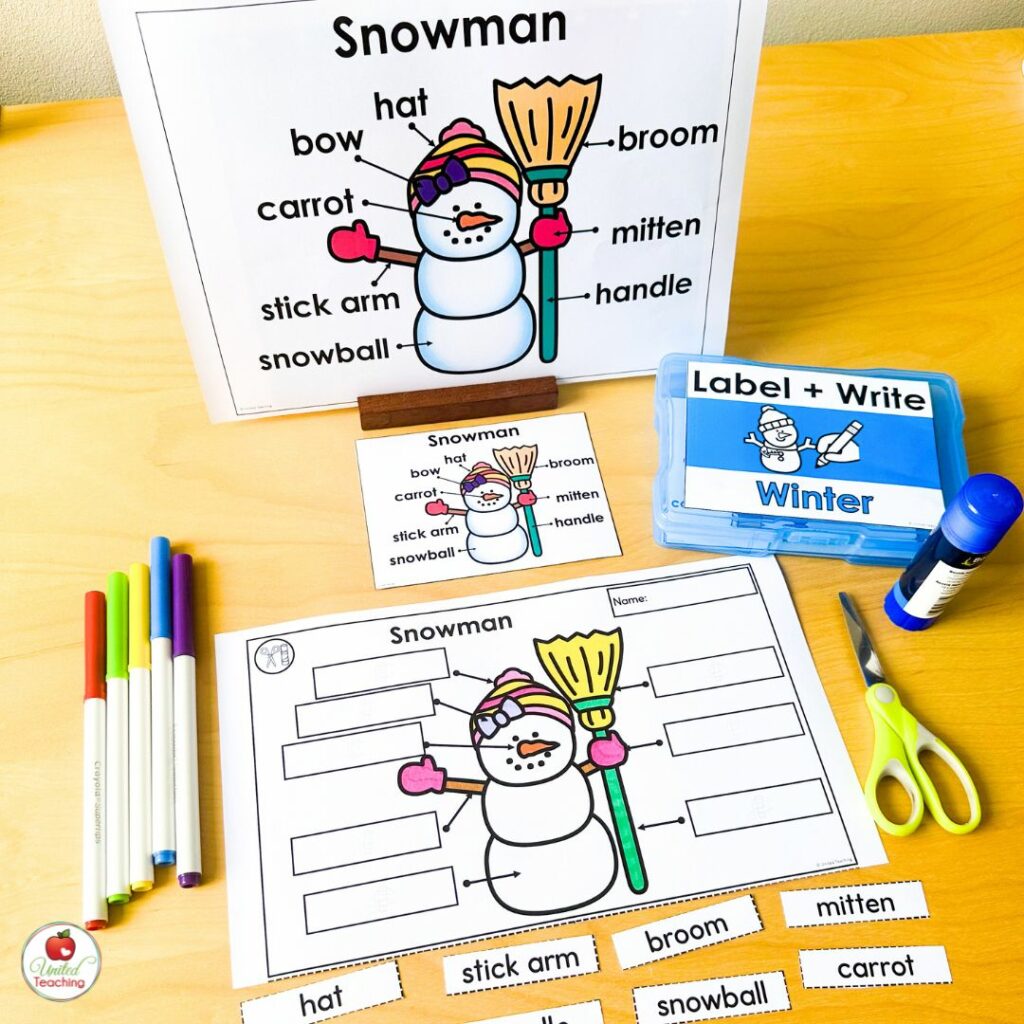
Creative Winter Labeling Ideas for the Classroom
There are numerous ways to introduce labeling to your kindergarten students. Here are some practical ways to integrate winter-themed labeling activities into your routine:
1. Start with Familiar Winter Items
Focus on objects and experiences your students already know. For example:
- Winter Clothing: Hats, mittens, boots
- Seasonal Elements: Snow, ice, frost
- Winter Fun: Sledding, skating, building snowmen
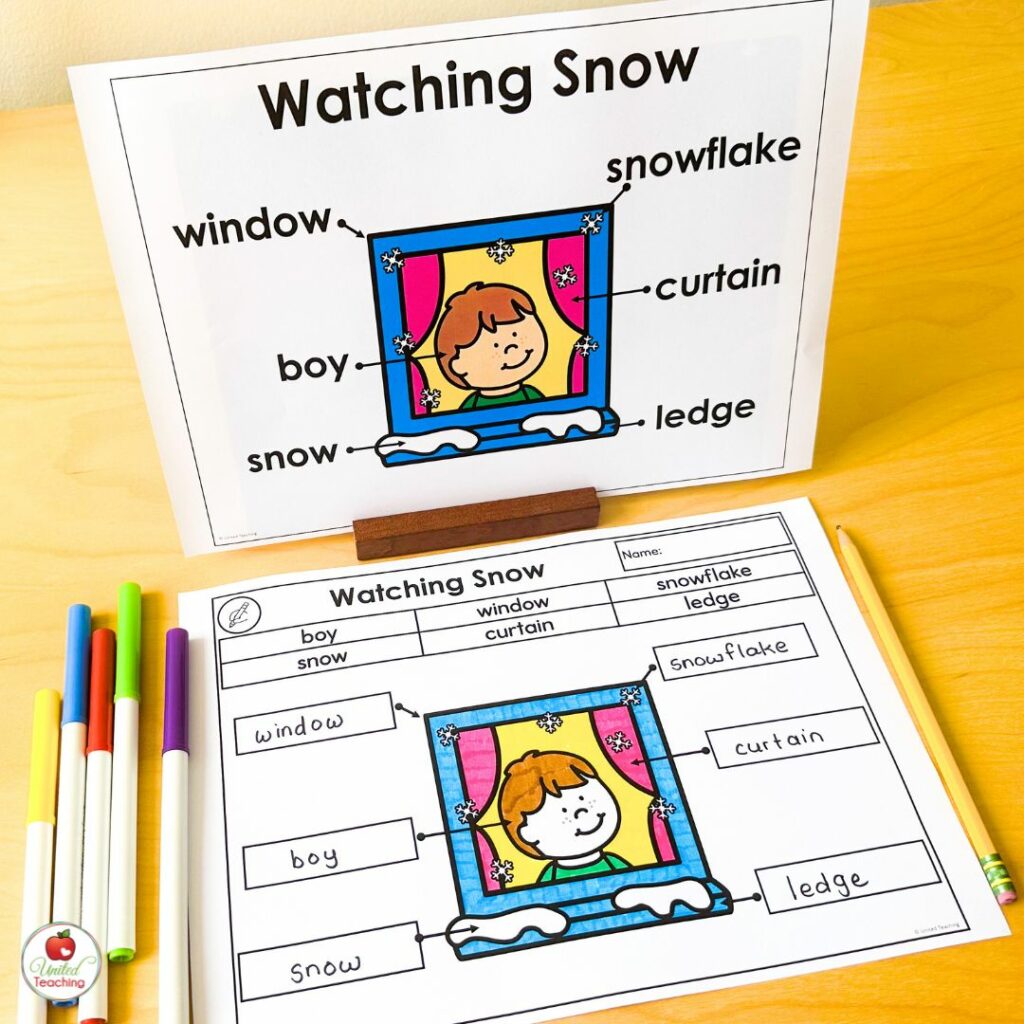
Using familiar items creates a sense of connection that helps students engage more deeply. For instance, you could bring in real items like a scarf or mittens for a hands-on experience. Discussing these objects before labeling provides context and builds excitement. Encourage students to share personal stories about wearing their winter gear or playing in the snow, making the activity even more relatable.
2. Incorporate Visual Supports
Clear and engaging visuals are essential for successful labeling activities. Use:
- High-contrast, simple images that highlight key features
- Picture dictionaries with winter vocabulary
- Consistently formatted materials to help students feel confident and supported
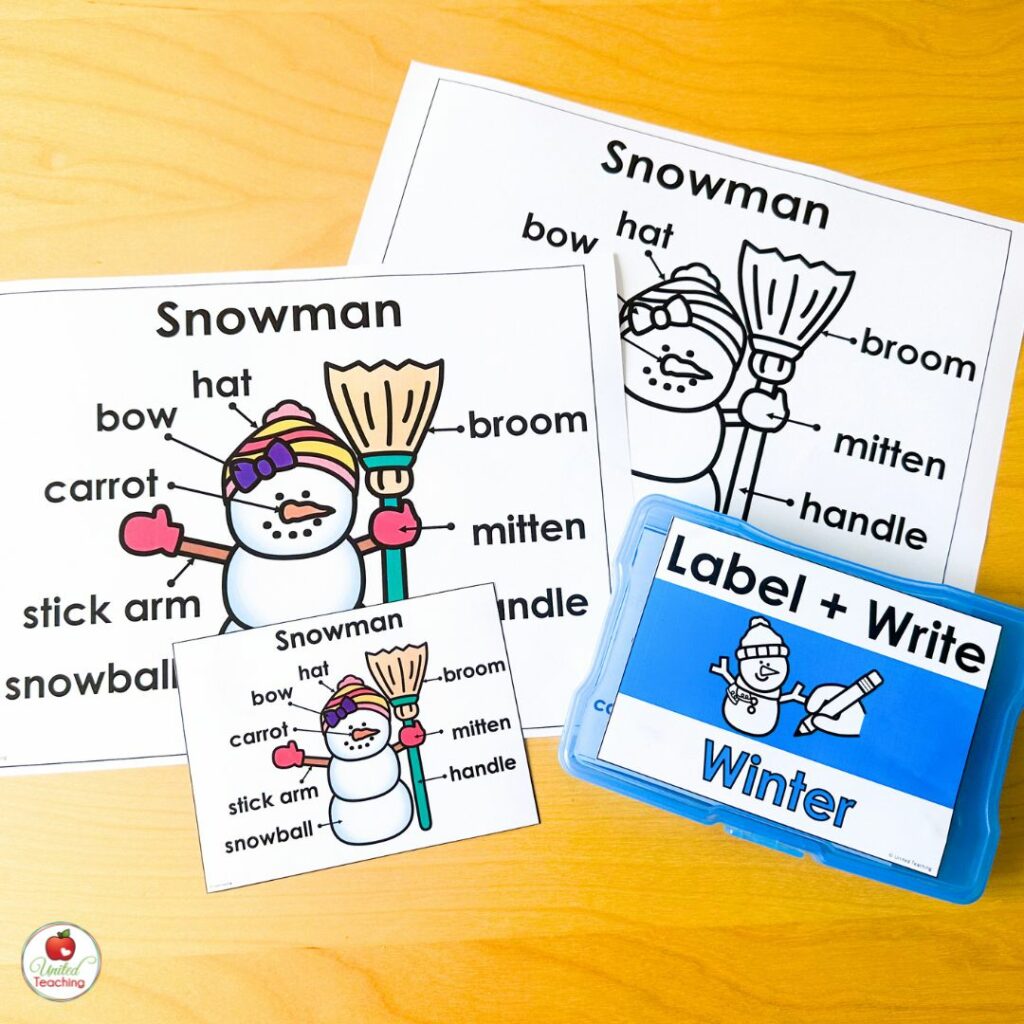
Displaying visuals on a classroom wall or interactive board can reinforce learning. For example, create a “winter word wall” featuring labeled images of snowflakes, boots, and hot chocolate. This serves as a visual reference during activities and sparks curiosity. You could also use photo cards of winter scenes to inspire students to label details like “snowman’s hat” or “sled on the hill.”
3. Progress Through Skill Levels
Differentiate labeling activities based on your students’ abilities. For beginners, tracing activities can help them practice letter formation while associating words with images. As students progress, introduce word banks featuring winter vocabulary, encouraging them to construct their own labels. Advanced learners can create short stories based on labeled scenes, such as a snowman “throwing a snowball” or children “sledding down a hill,” promoting creativity alongside writing skills.
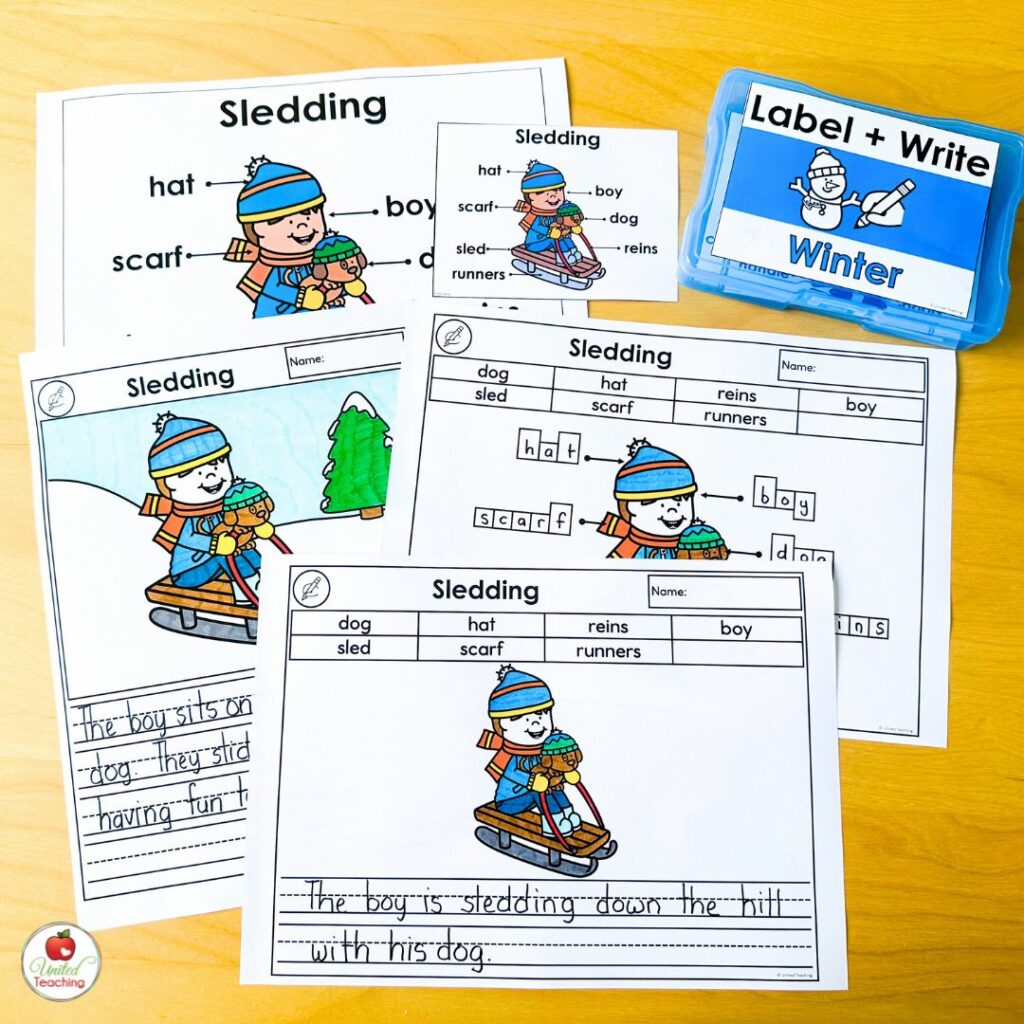
Beginners: Match Pictures to Words or Trace labels
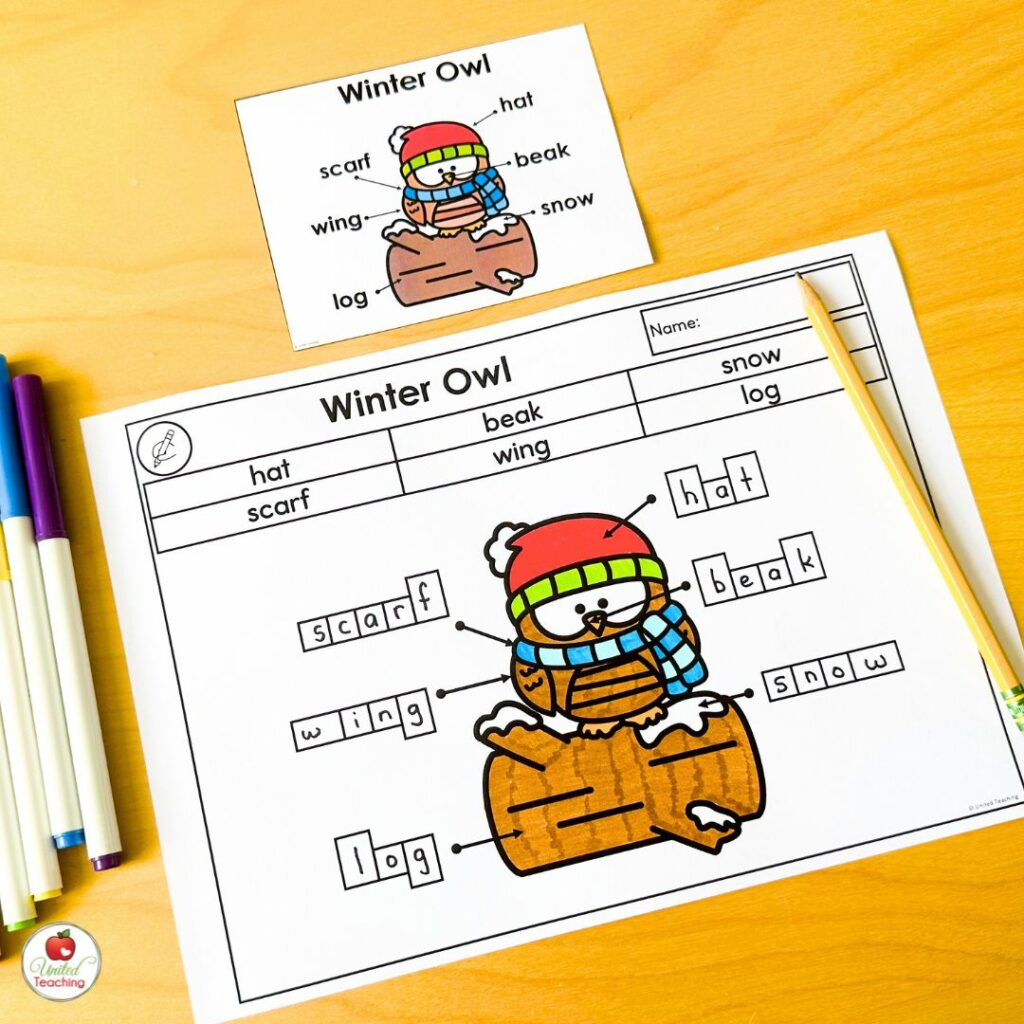
Intermediate: Label Images using a Word Bank or Write Simple Sentences
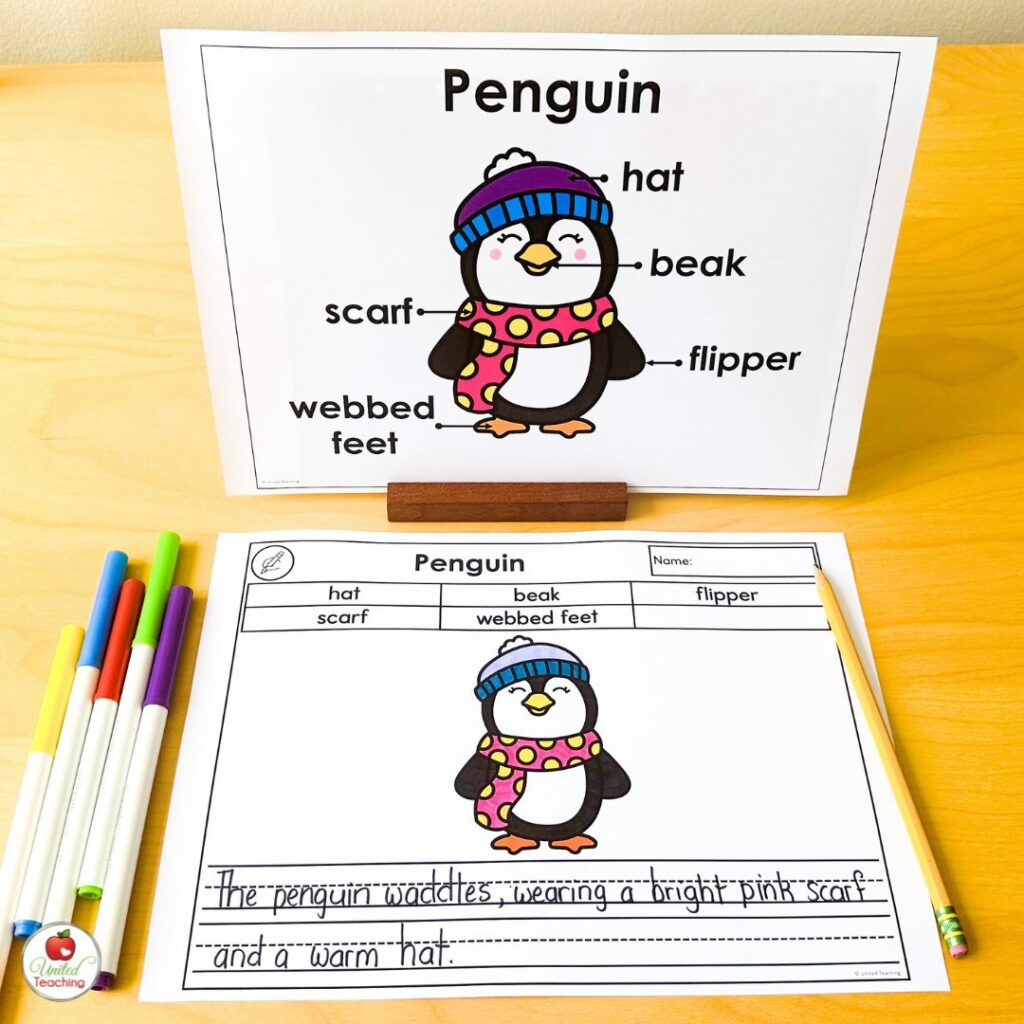
Advanced: Label without Prompts and Write Short Winter-Themed Stories
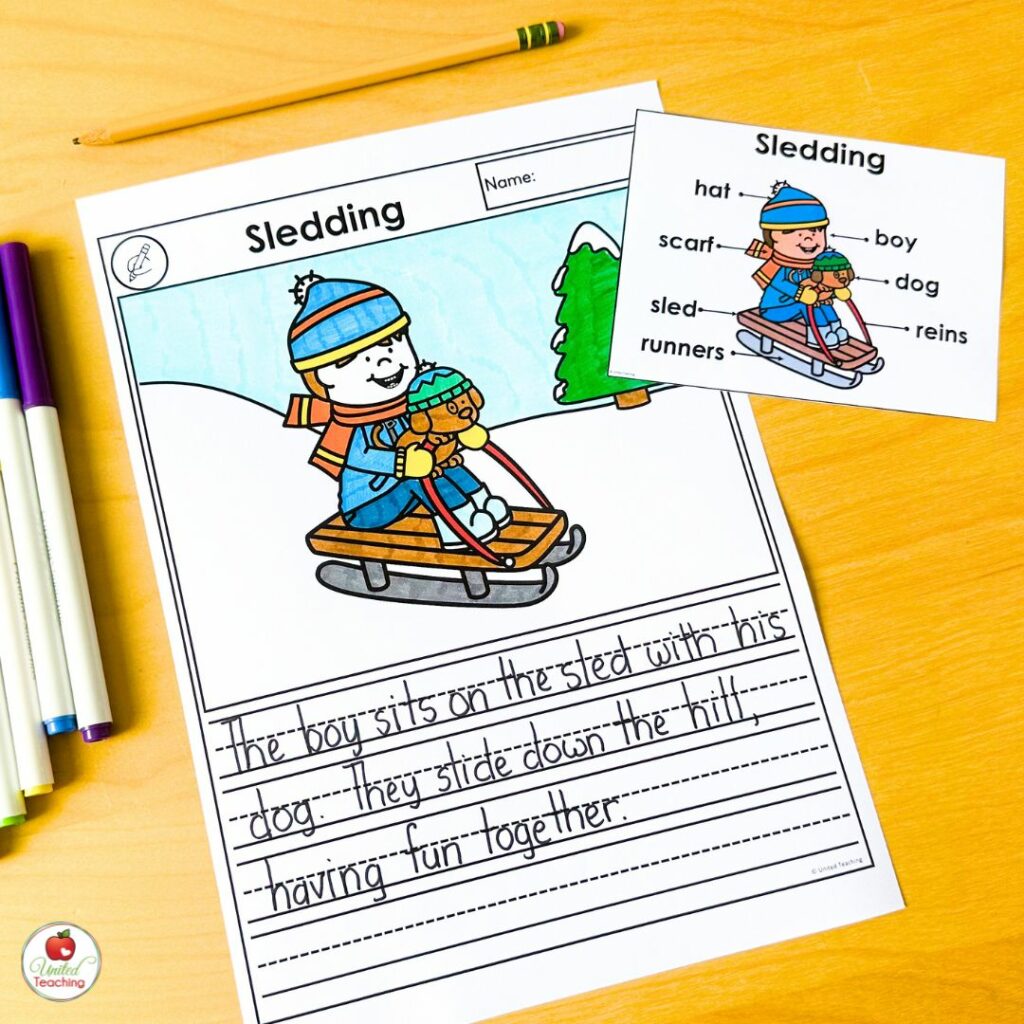
Practical Tips for Implementation when Labeling Winter Pictures
Winter labeling activities can fit seamlessly into your daily routine. Here’s how:
- Morning Work: Start the day with simple labeling worksheets.
- Literacy Centers: Set up a station with winter-themed pictures and writing tools.
- Small Groups: Provide differentiated activities to target specific skills.
- Independent Work: Use leveled worksheets for quiet time or early finishers.
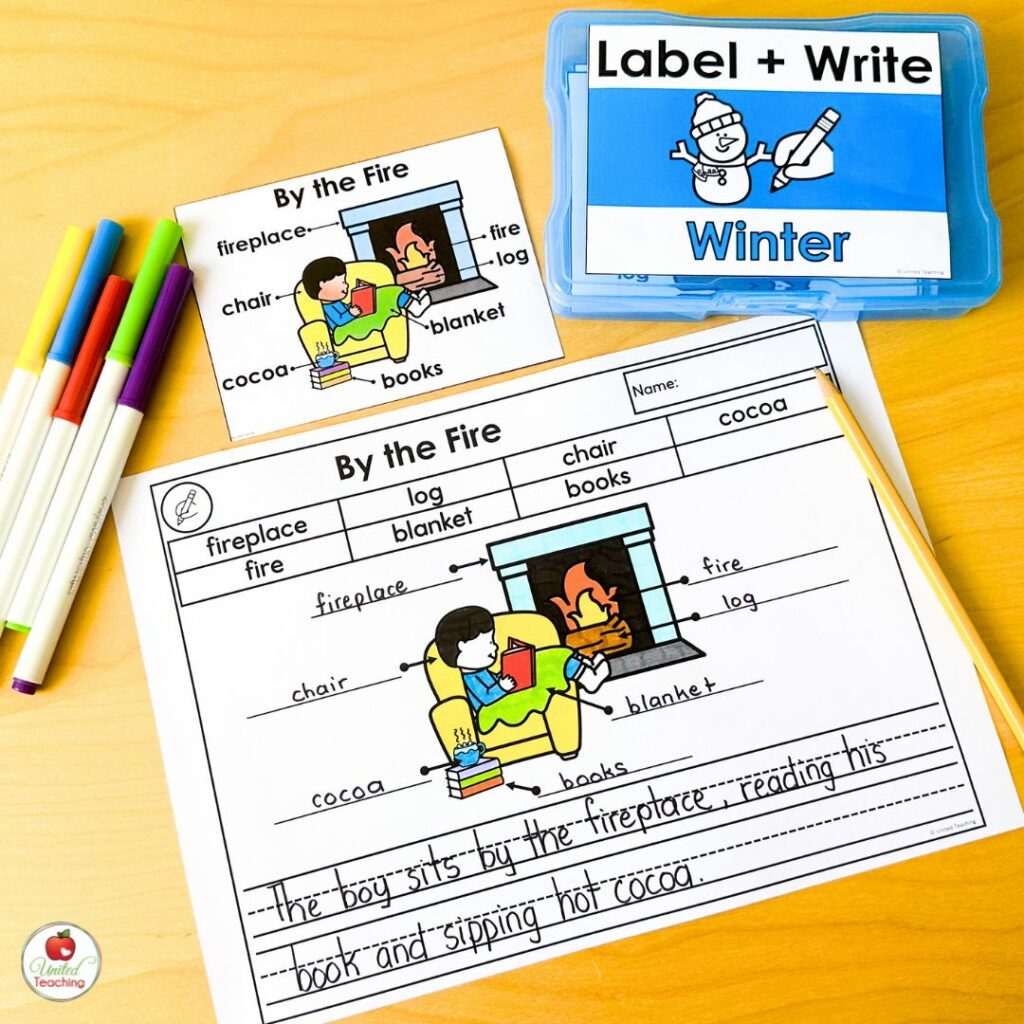
Make Winter Writing Easy with the Winter Label and Write Packet
If you’re looking for ready-made resources to support these activities, the Winter Label and Write Packet has everything you need. This comprehensive packet includes:
- Differentiated worksheets
- Picture cards
- Writing prompts
- Engaging winter-themed activities
The materials are designed to:
- Minimize prep time
- Support a range of learning needs
- Keep students engaged
- Enable independent work
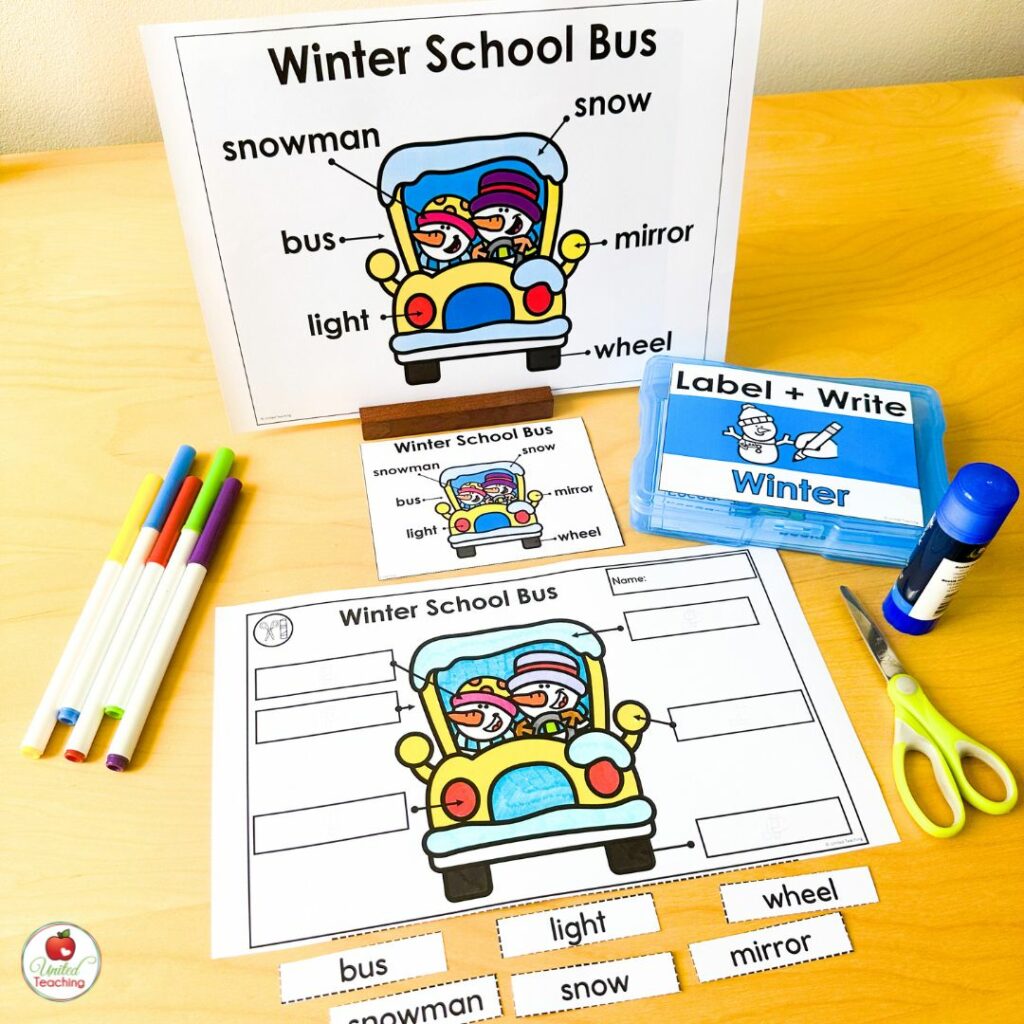
Transform Writing Time with Seasonal Themes
Labeling winter pictures isn’t just about handwriting practice; it’s a gateway to literacy that builds students’ confidence and skills. By using seasonal themes, these activities become more engaging and impactful, turning everyday learning moments into meaningful learning opportunities.
Want to make winter labeling even easier in your classroom? Check out my Winter Label and Write Packet. It’s packed with everything you need to make labeling fun and effective for your kindergarteners this winter season!

Pin for Later
